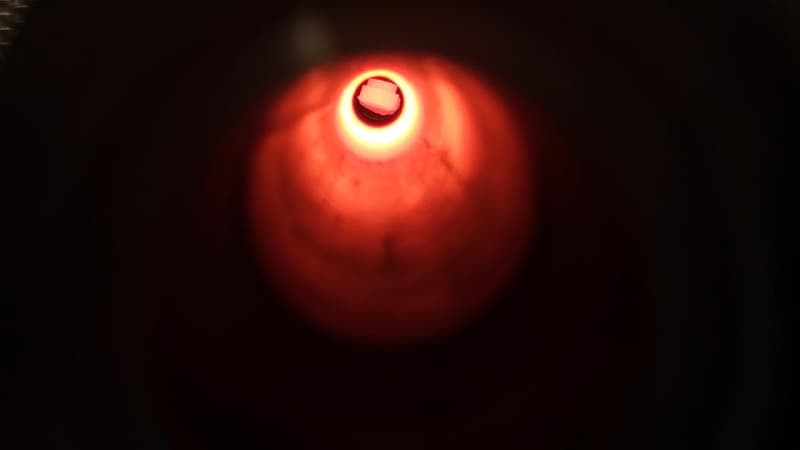Breakthrough Research Reveals Metal's Self-Healing Abilities at Nanoscale

In a remarkable discovery that might reshape the field of materials science, researchers from Sandia National Laboratories and Texas A&M University have reported observing a section of metal repairing itself. This finding was detailed in an experiment published in 2023 and could potentially lead to a new era in engineering practices, especially concerning the resilience and longevity of materials.
The experiment focused on a small piece of platinum, subjected to rigorous testing conditions. Using an advanced transmission electron microscope, scientists pulled the ends of this platinum sample at an astounding rate of 200 times per second. This process was designed to assess the metal's resilience in a vacuum environment.
During the observation, researchers noted that the platinum wafer, only 40 nanometers thick, exhibited self-healing properties after sustaining damage. Cracks resulting from repeated stress and motion, commonly referred to as fatigue damage, began to mend themselves within 40 minutes of observation. The crack, initially formed due to the applied strain, gradually fused back together, only to reappear and shift in a different direction afterwards.
“This was absolutely stunning to watch first-hand,” remarked materials scientist Brad Boyce from Sandia National Laboratories following the results' announcement. “We certainly weren't looking for it. What we have confirmed is that metals have their own intrinsic, natural ability to heal themselves, at least in the case of fatigue damage at the nanoscale.”
While the observation presents exciting possibilities, the underlying mechanics of this self-healing process remain largely unknown. The implications of such a discovery are immense, especially considering the significant costs and efforts associated with maintaining and repairing infrastructure—from bridges and machinery to everyday devices like smartphones. Self-healing metals could revolutionize these processes, potentially reducing downtime and maintenance expenses.
The research team noted that while this observation is groundbreaking, it aligns with earlier predictions made by Texas A&M University materials scientist Michael Demkowicz back in 2013. Demkowicz had conducted a study forecasting that nanocrack healing might occur, driven by the behavior of tiny crystalline grains inside metals shifting their boundaries in response to applied stress.
Demkowicz played a pivotal role in the current study, utilizing updated computer models that reflect the self-healing behavior of metals at the nanoscale, reinforcing his earlier theories. Another intriguing aspect of this research is that the healing process occurred at room temperature—contrary to traditional beliefs that such alterations in metal usually require high temperatures. The experiment was executed in a vacuum, prompting questions about whether this phenomenon could be replicated in conventional metals in standard atmospheric conditions.
A possible explanation for the self-healing behavior lies in a phenomenon called cold welding. This occurs at ambient temperatures when metal surfaces are brought close enough together, allowing their atoms to entwine. In typical scenarios, the presence of thin air layers or contaminants can impede this process, but in a vacuum environment, pure metals can come into contact and achieve this adhesion.
“My hope is that this finding will encourage materials researchers to consider that, under the right circumstances, materials can do things we never expected,” stated Demkowicz, emphasizing the importance of this research in expanding the horizons of materials science.
The findings from this groundbreaking research were published in the prestigious journal, Nature, adding to the ongoing discourse on innovative materials and their applications. An earlier version of this article was originally published in July 2023.


























